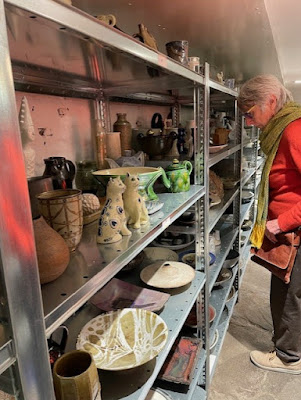We were very pleased to see that Swindon Festival of Literature was taking place this year after a suggestion last year that 30 years of organising literature festivals was enough for Matt Holland. However it was back this year, and much appreciated. The Friends of Museum and Art Swindon were very pleased to be asked to contribute to a talk by Dr Caroline Campbell on her book: The Power of Art. She asked: 'What has been and is the role of art in the past, the present and the future? What constitutes art? What does it do for a town and its people? What has made art so significant, so inspiring, and so provocative to some, and so irrelevant and meaningless to others? What is the future role of art?
Caroline Campbell is a former fellow of the Centre for Curatorial Leadership in New York and female Director of the National Gallery of Ireland. She was also an excellent and fascinating speaker and Cllr Marina Strinkovsky offered to show her the outside new premises where the new museum and gallery will be housed and she was suitably interested and impressed by the Civic Offices building.
Above Caroline talking about the importance of everyday items like mugs, her walk to work and a painting she sees everyday at work. The art in everyday things which enhances our lives.Although you can't really see this, we were very proud to be able to do our bit to help bring Dr Caroline Campbell to Swindon. I'm looking forward to reading her book












.jpg)

.jpg)



.jpg)